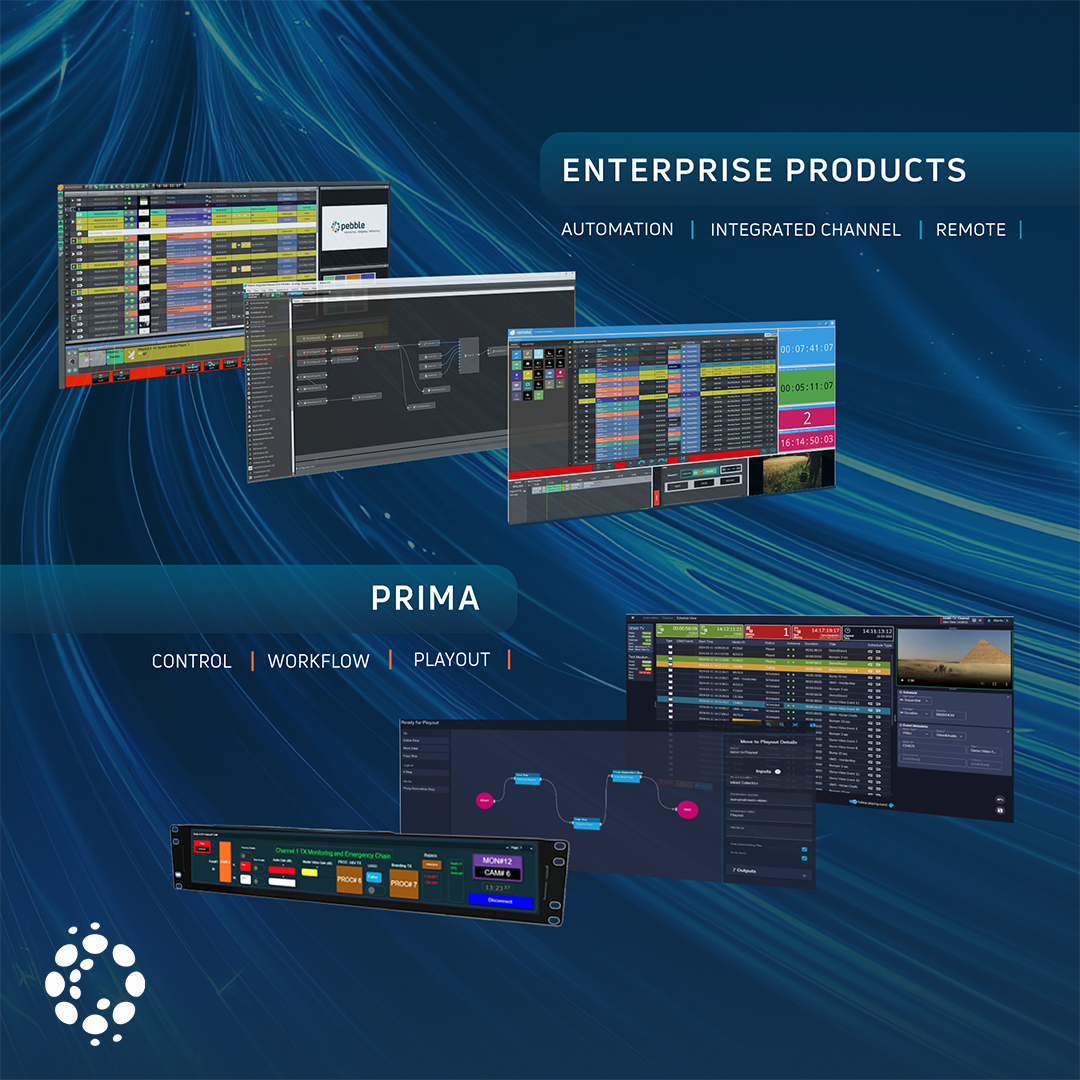Virtualising Playout – More Pebble Straight-Talk to Help You Through the Decision-making Process
Pebble first launched Orca – the virtualised integrated channel solution which runs under the control of a virtualised Marina automation system – in 2015. Several years on there are now multiple Orca deployments in diverse applications, including a full cross-continent business continuity service, and a large-scale multi-channel deployment which broadcasts in multiple languages requiring precise synchronisation and comprehensive audio playout rules.
With more and more deployments being announced, the buzz around virtualised playout keeps growing. But questions remain about the economic, logistical and technical benefits to the end user, and judging by the high volume of on-premise playout solutions that we install and commission – whether IP or baseband – it’s clear that this path is not one that every broadcaster or media company is ready to follow.
We originally visited this topic in our article ‘’Virtualising Your Playout Operations: A Reality Check” cautioning the broadcaster to carefully examine the reasons why they want to virtualise, and highlighting the many factors they need to consider. These observations on infrastructure, monitoring, benchmarking, provisioning and more still hold true, and we’d encourage you to take a look here.
In the meantime, we’ve noticed that the conversation has shifted and amplified around certain areas, with the debate around the private/public cloud escalating and new cloud-native solutions entering the market. So, what do you need to consider today if you’re thinking about virtualising? What is actually relevant to playout, and how do you cut through the marketing noise to establish what really matters to your operation? This is a great opportunity to deploy modern technologies, but not without assessing the risks of the move.
To cloud or not to cloud?
If you’re contemplating shifting your playout to the cloud, migrating your operations to IP is the first step, and it’s not a trivial one. But this enabling technology will open up your options to move off premise and handle your playout from a co-location data centre, a privately-owned data centre, or the public cloud.
Cost is a key factor here. Whilst running your playout on premise in the traditional way will cause an initial spike in investment when the servers are purchased, over the following years your running costs are going to be lower (e.g. Maintenance and SLA), and they tend to be fixed and calculated as a known percentage of the initial price.
Provided that your entire operation – not just playout – can be lifted and shifted to the public cloud, then comparing the cost of this to managing a typical on premise broadcast facility may give you favourable results in the short term. You’ll make savings on rack space and power consumption, as well as on the costs of running your building including fire suppressant systems, security guards, and all the necessary infrastructure to support staff and equipment. The figures soon become quite compelling if you’re in a position to consider such a radical wholesale move.
Specific savings in playout are not so easy to identify, however. There are obviously benefits to only using the compute resources you need, when you need them. But if you’re a Tier One broadcaster managing a high value service which requires high levels of availability this may not be relevant. And you’ll want to maximise the efficiency of your virtual machines, but certain processes in channel playout require provisioning for the worst case and highest loads, so they’re expensive machines to deploy.
Don’t forget to factor in the cost of ancillary services. It may seem inexpensive for you to deploy a virtual instance for an hour but multiply that up to establish the cost of keeping a channel on air for a month or a year and the picture is quite different. Also, your files may be free to upload, but can you really accurately predict the download volume (and associated cost)?
What is clear is that there is a compelling case to handle Disaster Recovery operations in the cloud. But don’t forget that if you need to spin up a channel quickly you also need to repoint your distribution end points, so you’ll need to consider which technology is required to handle this in order to create the full environment. A full Business Continuity system which runs in the public cloud, fully synchronised with your main operations may be the preferable approach, giving you the functionality you need, without disrupting your viewers’ watching experience.
So, is it really useful to have an infinitely elastic ecosystem for playout, when playout is usually static? How important is it to be able to scale within seconds? Once a channel is established it will generally run for at least months, with no great variation around its processing requirements. It’s definitely worth considering whether, for fixed channels with pre-loaded content and static schedules, you really need that agility. It may be that the benefit you gain from shifting to the public cloud lies more in the 3rd party networking expertise and enhanced redundancy that the large cloud services offer with, for example, Amazon having three data centres in any one region, and your choice of configurable redundancy across those.
In Conclusion
As a specialist playout solution provider, we have the technology and the expertise to deploy solutions on premise, in the cloud, utilizing baseband, compressed or uncompressed IP. We pride ourselves in remaining agnostic, giving impartial, practical advice, and offering solutions which are architected specifically to meet your requirements now and in the future. We would be happy to share our experience so that you are aware of the facts before deciding which approach will give you the results your business needs.
Nevertheless, we believe in the evolutionary approach. We provide an architecture that can grow and change with your needs, perhaps allowing you to change the core while all your infrastructure is still SDI and then to migrate to a full IP solution with minimal disruption. Throughout this journey we remain focussed on the importance of custom system design, collaborative project delivery, and a flexible approach to working with you to deliver your solution.




